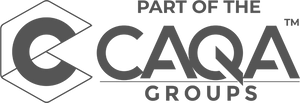
Developing your own Learning Management System (LMS) or eLearning platform
SUKH SANDHUDeveloping your own Learning Management System (LMS) can be a daunting task, but it can also offer numerous benefits. A custom LMS can be tailored to your specific needs, provide greater control over data privacy and security, and offer a more seamless user experience. However, it requires a significant investment of time, resources, and expertise.
Here are some key considerations for developing your own LMS:
Define Your Needs and Goals
Before embarking on an LMS development project, it's crucial to define your needs and goals. Determine what features and functionalities are essential for your organisation and what you hope to achieve with the LMS. Consider the size of your organization, the number of users, and the types of courses and programs you offer.
Choose the Right Technology Stack
Choosing the right technology stack is essential for developing a robust and scalable LMS. Consider your organisation's existing technology infrastructure, the programming languages and frameworks your developers are proficient in, and the scalability and flexibility of the technology stack.
Design the User Interface and Experience
The user interface and experience are critical components of an LMS. Your LMS should be intuitive and easy to navigate, with clear instructions and user-friendly design. Consider incorporating multimedia elements, such as videos and interactive content, to enhance engagement and learning outcomes.
Develop Custom Features and Functionalities
One of the most significant benefits of developing your own LMS is the ability to create custom features and functionalities that are specific to your organisation's needs. Consider developing features such as gamification, social learning, and analytics and reporting.
Ensure Data Privacy and Security
Data privacy and security are critical considerations when developing an LMS. Ensure that your LMS complies with relevant regulations, such as GDPR and CCPA, and implement robust security measures to protect user data.
Test and Launch
Once you've developed your LMS, it's crucial to test it thoroughly to ensure that it meets your organization's needs and functions as intended. Conduct user testing and incorporate feedback to refine the LMS before launching it.
Provide Ongoing Support and Maintenance
After launching your LMS, it's essential to provide ongoing support and maintenance to ensure that it continues to function correctly and meets your organisation's evolving needs. Consider developing a dedicated support team and implementing a regular maintenance schedule.
Best technologies you can use today
Here are some of the best technologies you can use today to develop your own LMS:
Content Management Systems (CMS)
A CMS is a software application that enables the creation and management of digital content. It provides a user-friendly interface to manage website content, including text, images, videos, and other media types. An LMS requires a CMS to manage course content and users.
Popular CMS options include WordPress, Drupal, and Joomla. These platforms have a large community of developers, support, and resources. They are also highly customizable and provide features for e-commerce, social networking, and multimedia management.
Learning Management System Frameworks (LMSF)
An LMSF is a software framework that provides a structure for developing an LMS. It includes the core functionalities required for a basic LMS, such as user management, course management, and content management.
LMSF options include Moodle, Sakai, and Open edX. These frameworks provide a solid foundation for developing an LMS and are highly customisable.
Cloud Hosting Services
Cloud hosting services offer a scalable and cost-effective solution for hosting your LMS. Cloud hosting providers offer virtual machines with pre-configured operating systems, databases, and web servers. This allows for easy deployment and management of your LMS.
Popular cloud hosting services include Amazon Web Services (AWS), Microsoft Azure, and Google Cloud. These services offer a range of features, including scalability, security, and backup and recovery options.
Learning Record Stores (LRS)
An LRS is a software application that stores and manages learning data, including learner progress, achievements, and assessments. It provides an analytics platform for monitoring and evaluating learner performance and identifying areas for improvement.
Popular LRS options include Learning Locker, Watershed, and GrassBlade. These platforms provide powerful analytics tools, customisable dashboards, and integration with popular LMSs.
Virtual Classroom Technologies
Virtual classroom technologies enable synchronous online learning, allowing learners to attend live classes remotely. These technologies provide features such as screen sharing, video conferencing, and whiteboard tools.
Popular virtual classroom technologies include Zoom, Adobe Connect, and BigBlueButton. These platforms provide a range of features for facilitating online learning and collaboration.
In summary, developing your own LMS can offer numerous benefits, but it requires careful planning, development, and ongoing maintenance. Consider your organisation's needs and goals, choose the right technology stack, design the user interface and experience, develop custom features and functionalities, ensure data privacy and security, test and launch, and provide ongoing support and maintenance.
RECENT POSTS





